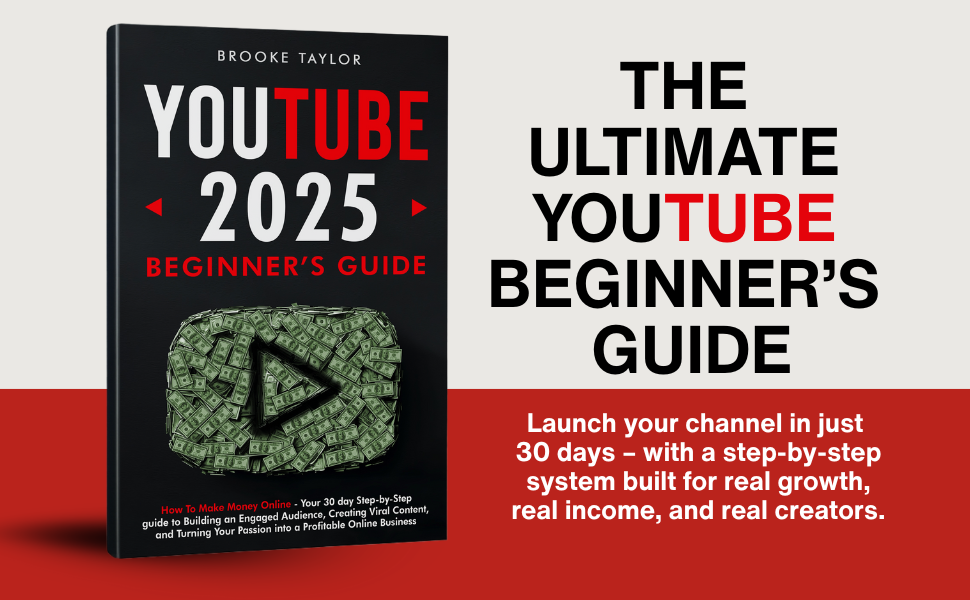Highest-Paid Skool Communities: Real Examples and What They Sell
Why I Started Studying Skool Communities
When I first launched my own Skool community, I couldn’t help but wonder: What do the most successful Skool creators look like? How much are they making? What exactly are they selling?
I didn’t want to just guess. I wanted to learn from the people already running highly profitable Skool communities. And what I discovered is inspiring: some Skool communities are earning six and even seven figures per year, all from combining courses, community, and coaching into one seamless platform.
In this post, I’ll break down some of the highest-paid Skool communities, what they’re selling, and what makes them work so well. I’ll also show you how you can model their strategies inside your own Skool group.
If you want to start your own, here’s the link I used to set mine up: Sign up for Skool here.

Table of Contents
Why Skool Communities Make Serious Money
Before we dive into examples, let’s look at why Skool is such a money-making machine for the right creators:
- Recurring revenue – Most Skool communities are subscription-based, which means predictable monthly income.
- All-in-one platform – Courses, community, and live calls in one place (no juggling 5 tools).
- Engagement through gamification – Members stay active longer, which reduces churn.
- Simple payments – Stripe integration makes getting paid seamless.
In short: Skool communities thrive because they combine knowledge + accountability + connection in one package. That combination is what people pay for—and stay for.
Example 1: Fitness & Health Communities
Some of the most profitable Skool communities are in the fitness niche. Why? Because people are willing to pay for accountability and transformation.
What they sell:
- Structured workout programs hosted in the classroom.
- Meal plans and nutrition guides.
- Group challenges (e.g., “30-day shred challenge”).
- Weekly coaching calls.
Pricing: $49–$99/month is common.
Why it works: Fitness is a results-driven niche. Members don’t just want to learn—they want to see physical transformation, and the community keeps them accountable.
Example 2: Business Coaching & Consulting
High-ticket business communities are among the highest-paid Skool groups. Many coaches who used to rely on Facebook groups have now moved to Skool.
What they sell:
- Step-by-step programs (client acquisition, scaling, marketing).
- Weekly group coaching calls.
- Templates, scripts, and business systems.
- Access to a network of entrepreneurs.
Pricing: $100–$500/month, with some premium masterminds charging $1,000+.
Why it works: Business owners invest when they see a clear return. Skool makes it easy to deliver coaching, tools, and networking in one package.
Example 3: Investment & Trading Groups
Another booming category is trading and investing communities. Whether it’s stock trading, real estate, or crypto, people pay big money to learn and get support.
What they sell:
- Daily or weekly market analysis inside the classroom.
- Alerts, case studies, and trading breakdowns.
- Live Q&A and chart reviews.
- Community discussion for accountability and strategy-sharing.
Pricing: $50–$200/month on average.
Why it works: People don’t just want theory—they want real-time guidance. Skool’s community + calendar features make it perfect for this niche.
Example 4: Creative Skills & Hobbies
You might think only business or fitness makes money—but some of the highest-paid Skool communities focus on creative skills.
What they sell:
- Step-by-step courses (photography, design, music production, writing).
- Peer project reviews inside the community.
- Live workshops with industry experts.
- Challenges (e.g., “30-day design challenge”).
Pricing: $29–$99/month.
Why it works: Creative people value feedback and accountability. Skool creates an environment where they can learn AND share.
Example 5: Personal Development & Mindset
The self-improvement space has massive demand, and Skool creators are capitalizing on it.
What they sell:
- Courses on productivity, focus, or emotional intelligence.
- Group coaching calls to build accountability.
- Daily prompts and journaling challenges.
- Supportive community for encouragement.
Pricing: $30–$150/month.
Why it works: Transformation feels more achievable when done alongside others. Members pay for both the lessons and the encouragement.
Example 6: High-Ticket Masterminds
Finally, some of the highest-paid Skool communities are elite masterminds. These aren’t for beginners—they’re for people willing to pay for direct access.
What they sell:
- Private mastermind calls.
- Direct access to the leader or experts.
- Exclusive tools, frameworks, and networks.
- Small group accountability.
Pricing: $500–$1,500/month (sometimes more).
Why it works: People will invest heavily for proximity to experts and like-minded peers. Skool makes delivery simple without sacrificing exclusivity.
Common Threads Among the Highest-Paid Communities
After studying these examples, I noticed a few patterns:
- Clear transformation – Members know exactly what result they’ll get.
- Engagement systems – Weekly calls, challenges, or gamification keep energy alive.
- Structured learning – The classroom provides a step-by-step path.
- Recurring pricing – Monthly subscriptions drive predictable income.
- Supportive culture – Members feel like they’re part of something bigger.
It’s not about size—it’s about alignment, structure, and value.
How to Model These Success Stories
Here’s the step-by-step framework I followed to model the highest-paid Skool communities:
- Pick a transformation – What result will people pay for?
- Package your offer – Combine course + community + live calls.
- Choose your price point – Start with $30–$100/month and scale.
- Set up Skool – Sign up here and launch your space.
- Build engagement loops – Challenges, events, and recognition.
- Monetize further – Add upsells, masterminds, or affiliate offers.
The path is simple. The hardest part is starting.
Why Skool Beats Other Platforms for Paid Communities
I tested other tools before Skool, and here’s why they didn’t work:
- Facebook groups – Distracting, no payments, no structured learning.
- Discord – Great for chat, terrible for structured programs.
- Kajabi/Teachable – Great for courses, weak for community.
Skool combined the best of all worlds: structured learning, vibrant community, and simple monetization.
If you’re serious about building one of the highest-paid communities in your niche, start here: Sign up for Skool.
FAQs About Skool’s Highest-Paid Communities
1. How much can you realistically earn with a Skool community?
It depends on pricing and niche. Many creators earn $5,000–$20,000/month with 100–200 members.
2. Do you need a big audience?
No. Some of the most profitable Skool groups are small but highly focused.
3. How fast can you grow?
With the right offer and marketing, some communities hit $10k/month within months.
4. Is Skool beginner-friendly?
Yes. I set mine up in under an hour without needing technical skills.
When I looked into the top Skool communities, I noticed they all share one thing: a clear identity that speaks to their niche. Whether it’s entrepreneurs, creators, or tech founders, the groups that grow fastest know exactly who they serve and what result they deliver. That clarity separates the successful Skool communities examples from the rest.
The concept of a highest earning Skool community isn’t just hype. I found multiple creators citing revenue milestones from their Skool groups. It isn’t about being lucky—it’s about structure, consistency, and a membership model that works. When members see transformation, they stick around and referrals begin to happen naturally.
It’s fascinating to examine the top earning Skool communities dataset. Many of them started small — a focused cohort, weekly calls, a private feed — and gradually built systems that allowed members to level up, stay engaged, and become loyal. Growth often accelerates once the machine is in place.
If you search for most popular Skool communities, you’ll notice common structures: a free welcome area, a paid core, clear progression, and frequent live interaction. Popular doesn’t always mean massive size—it often means high engagement relative to member count. A compact, active community often outpaces a large, dead one.
The phrase Skool top earners brings attention not just to revenue, but to community metrics: how often members post, how many complete lessons, how many attend live calls. Those engagement numbers are what turn a regular group into a high-performing one. You’ll see that in the examples of communities that make serious income inside Skool.
When you dig into the highest paid Skool community examples, you find the highest ticket offers aren’t always the flashy ones—they’re the ones that solve a crucial problem deeply. A niche creator with 200 committed people paying monthly can outperform a generic group with 2,000 passive members. Examples prove this.
Looking at Skool top communities, the standout ones focus on more than content—they build culture. They create micro-journeys, community rituals, and a sense of identity. That culture is what members buy into, not just the curriculum. That’s a pattern I consistently saw across the case studies.
When you examine Skool communities examples of success, the ones that succeed don’t skip onboarding. They invest in welcome flows, ask for introductions, and get new members to post within the first 48 hours. That early activity creates momentum and helps the group feel alive from day one.
Studying successful Skool communities examples, you’ll note the language used in their group descriptions: words like “transform,” “accountability,” “mastermind,” “exclusive.” These tags attract serious people, not casual observers. If you position your community similarly, your funnel sets the stage for higher value.
The term top Skool communities doesn’t always correlate with size—it correlates with value-per-member. A community with 150 paying seats at $297/month brings in more, with higher engagement, than one with 1,000 seats at $27/month if the latter lacks retention. The real winners know this.
In the search for most popular Skool communities, you’ll also find discovery plays a role. Some groups get noticed because their public group pages are optimized: clear headlines, good visuals, strong social proof. Traffic comes not only from emails but from people searching and finding them inside Skool and via Google.
Finally, the infrastructure behind a highest earning Skool community often includes recurring live sessions, peer-led cohorts, and challenge cycles. These are not one-off schools—they’re ecosystems. That means higher retention, lower churn, and sustainable growth. The examples on display make this pattern obvious.
Conclusion: Learn from the Highest-Paid, Then Build Your Own
The highest-paid Skool communities aren’t magic. They’re built on clarity, structure, and consistent engagement. They sell transformations—not just information.
And the best part? You don’t need a massive audience to replicate their success. You just need a strong offer, the right members, and a platform that makes everything simple.
For me, that platform was Skool. It turned my scattered efforts into a profitable, supportive community.
If you’re ready to build your own high-paying community, take the first step here: Sign up for Skool today.







